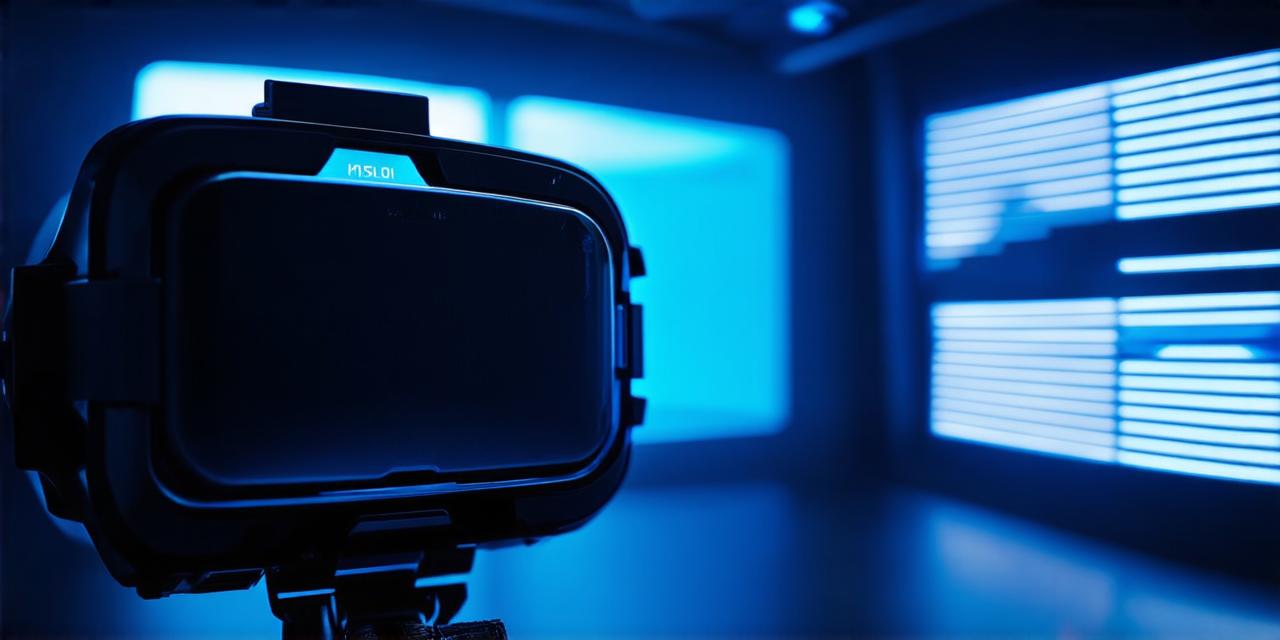Virtual reality (VR) has been rapidly evolving since its inception and is now transforming the way we experience movies, games, and even everyday life. The ability to immerse oneself into a simulated environment has opened up a whole new world of possibilities for filmmakers and content creators alike.
Understanding Virtual Reality in Film Making
Virtual reality technology allows users to experience a simulated environment as if they were physically present in that space. This immersive technology is being used in filmmaking to create unique and captivating experiences for audiences.
Pre-Production: Conceptualization and Planning
The pre-production phase is all about conceptualizing and planning the virtual reality experience. Filmmakers must decide on the story they want to tell, the environment in which it will take place, and the technology required to create the experience.
Production: Capturing and Editing
The production phase is where the magic happens. Filmmakers use specialized cameras and software to capture 360-degree footage of the environment in which the story takes place. This footage is then edited together using a combination of computer-generated imagery (CGI) and live-action footage to create a seamless and immersive experience for the viewer.
Post-Production: Finishing Touches
The post-production phase involves adding finishing touches to the virtual reality experience. This includes sound design, visual effects, and any other elements that enhance the overall experience. Once completed, the virtual reality experience is ready for distribution and consumption by audiences.
Benefits of Virtual Reality in Filmmaking
Virtual reality has several advantages when it comes to filmmaking. Here are some of the most notable benefits:
- Immersive Storytelling: VR allows filmmakers to create immersive environments that transport viewers into the story being told.
- Increased Engagement: The use of virtual reality technology has been shown to increase audience engagement by up to 80%. This is due to the fact that viewers feel like they are truly part of the story, rather than simply watching it unfold on screen.
- Unique Perspectives: VR allows filmmakers to explore new and unique perspectives on a story. For example, a virtual reality experience could be used to tell a story from multiple points of view, giving viewers a more comprehensive understanding of the narrative.
- Cost-Effective: Virtual reality technology can be expensive, but it is also cost-effective in the long run. Once the initial investment has been made, filmmakers can use VR technology to create multiple experiences for a fraction of the cost compared to traditional filmmaking techniques.
Drawbacks of Virtual Reality in Filmmaking
While virtual reality technology has numerous benefits, it also has its drawbacks. Here are some of the most notable:
- Limited Accessibility: Not everyone has access to virtual reality technology, which limits the potential audience for these experiences. However, this is likely to change as the technology becomes more mainstream and affordable.
- Technical Limitations: Virtual reality technology is still in its early stages, and there are technical limitations that filmmakers must overcome. For example, there are currently limitations on how much data can be processed by VR systems, which can result in stuttering or lagging experiences.
- Expensive Equipment: Virtual reality equipment can be expensive to purchase and maintain, making it difficult for smaller filmmakers and studios to invest in the technology. However, as the technology advances and becomes more affordable, this barrier will likely become less of an issue.
Real-Life Examples of Virtual Reality in Filmmaking
There are numerous examples of virtual reality being used in filmmaking, including:
- “The Climb”: This VR experience tells the story of two climbers scaling a sheer vertical face. The viewer is immersed in the experience and feels like they are actually climbing alongside the characters.
- “Tilt Brush”: This VR experience allows users to paint in 3D space using a virtual reality headset and controllers. The user can create their own environments and characters, providing endless creative possibilities.
- “Pearl”: This animated short film tells the story of a father and daughter on a road trip. The viewer experiences the journey from the perspective of the daughter, who is seated in the back seat of the car.
- “The Chamber”: This VR experience takes place in a dark, underground chamber where the viewer must navigate through a series of challenges to escape. The use of virtual reality technology creates a truly immersive experience that engages the viewer from start to finish.
Summary
Virtual reality technology is revolutionizing the way we experience movies and games, and it has huge potential for filmmaking. While there are technical limitations and accessibility issues that must be overcome, virtual reality offers filmmakers unique opportunities to create immersive and engaging experiences for audiences. As the technology continues to evolve, we can expect to see even more innovative uses of virtual reality in filmmaking in the future.
FAQs
1. What is virtual reality (VR) in filmmaking?
Virtual reality technology allows users to experience a simulated environment as if they were physically present in that space. In filmmaking, VR is used to create unique and captivating experiences for audiences.
2. How does virtual reality work in film making?
Virtual reality in filmmaking involves three main stages: pre-production, production, and post-production. During the pre-production stage, filmmakers plan the experience and decide on the equipment needed. In the production stage, specialized cameras and software are used to capture 360-degree footage that is then edited together. In the post-production stage, finishing touches such as sound design and visual effects are added.
3. What are some of the benefits of virtual reality in filmmaking?
Virtual reality offers several advantages when it comes to filmmaking, including immersive storytelling, increased engagement, unique perspectives, and cost-effectiveness.
4. What are some of the drawbacks of virtual reality in filmmaking?
While virtual reality technology has numerous benefits, it also has its drawbacks, including limited accessibility, technical limitations, and expensive equipment.
5. Can you give real-life examples of virtual reality in filmmaking?
There are many examples of virtual reality being used in filmmaking, including “The Climb”, “Tilt Brush”, “Pearl”, and “The Chamber”.
